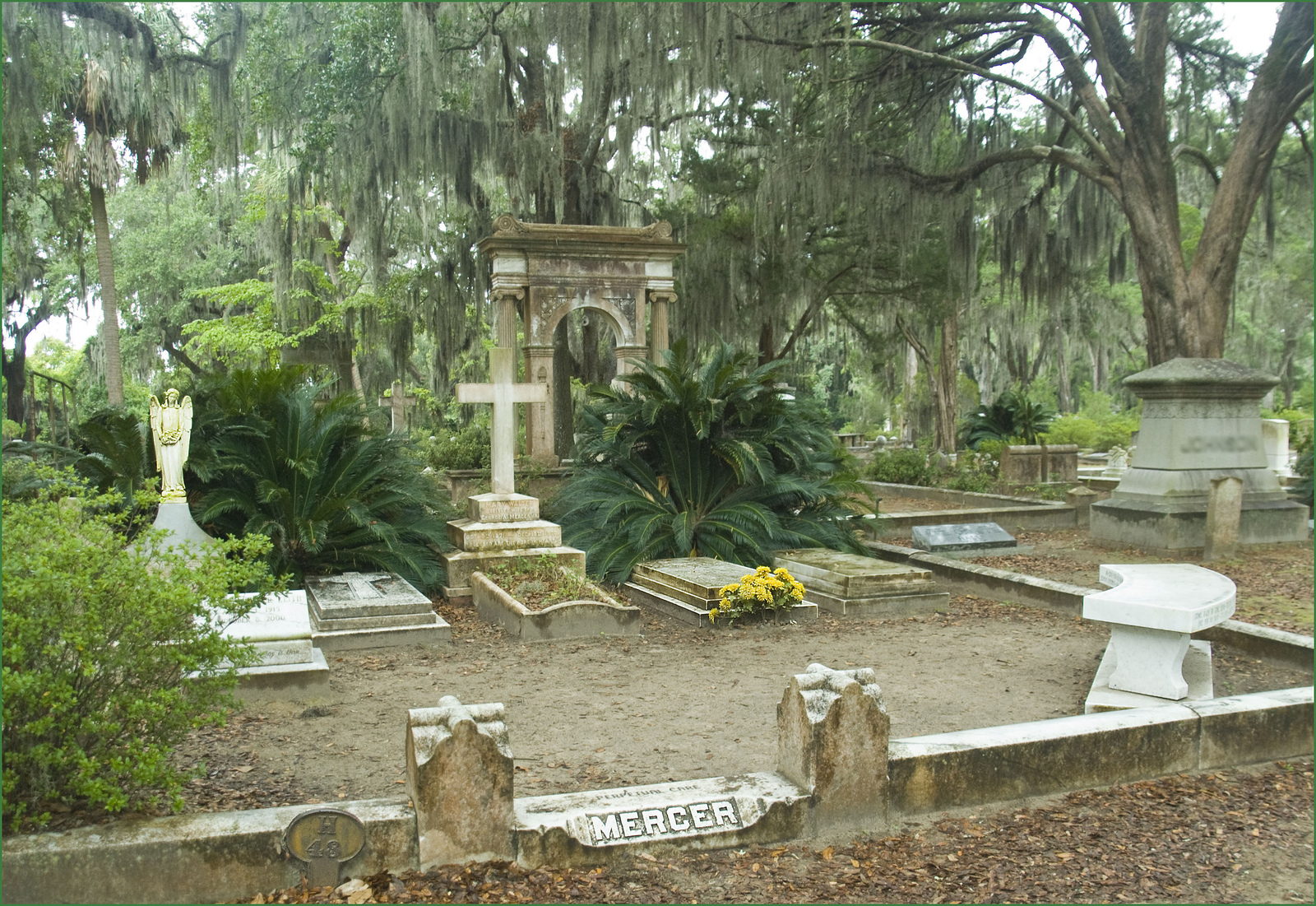
Mercer Family Plot at Bonaventure Cemetery. Photo © Ron Cogswell, licensed Creative Commons Attribution.
On the banks of the Wilmington River just east of town lies one of Savannah’s most unique sights, Bonaventure Cemetery (330 Bonaventure Rd., 912/651-6843, daily 8 a.m.–5 p.m.). John Muir, who went on to found the Sierra Club, wrote of Bonaventure’s Spanish moss–bedecked beauty in his 1867 book A Thousand-mile Walk to the Gulf, marveling at the screaming bald eagles that then frequented the area. The bald eagles are long gone, but, like Muir, Savannahians to this day reserve a special place in their hearts for Bonaventure. While its pedigree as Savannah’s premier public cemetery goes back 100 years, it was used as a burial ground as early as 1794. In the years since, this achingly poignant vista of live oaks and azaleas has been the final resting place of such local and national luminaries as Johnny Mercer, Conrad Aiken, Wormsloe Historic Site founder Noble Jones, and, of course, the Trosdal plot, former home of the famous Bird Girl statue (the original is now in the Telfair Academy of Arts and Sciences). Fittingly, the late, great Jack Leigh, who took the Bird Girl photo for the cover of Midnight in the Garden of Good and Evil, is interred here as well. If you’re doing a self-guided tour, go by the small visitors center at the entrance and pick up one of the free guides to the cemetery, assembled by the local volunteer Bonaventure Historical Society.Go to Section K to see the Greek cemetery, a veritable stone chronicle of that local community’s history from the late 1800s. Section K also holds many memorials to Spanish-American War veterans, commemorated by a special cross. Close by is the Jewish section, established by congregants of Temple Mickve Israel, with many evocative inscriptions on the tombs of the many Holocaust survivors buried here. Closer to the river is an interesting plot set aside for railroad conductors. While strolling through Bonaventure, you might see some burial sites lined with reddish-brown tiles, their tops studded with half circles. Mistakenly known as “slave tiles,” these are actually a rare type of Victorian garden tile that has nothing whatsoever to do with slaves.Several local tour companies offer options that include a visit to Bonaventure. If you’re doing a self-guided tour, go by the small visitors center at the entrance and pick up one of the free guides to the cemetery, assembled by the local volunteer Bonaventure Historical Society. By all means, do the tourist thing and pay your respects at Johnny Mercer’s final resting place, and go visit beautiful little “Gracie” in Section E, Lot 99. But I also suggest doing as the locals do: Bring a picnic lunch and a blanket and set yourself beside the breezy banks of the Wilmington River, taking in all the lazy beauty and evocative bygone history surrounding you.
To get here from downtown, take President Street Extension east and take a right on Pennsylvania Avenue, then a left on Bonaventure Road. Alternately, go east on Victory Drive (U.S. 80) and take a left on Whatley Road in the town of Thunderbolt. Veer left onto Bonaventure Road. The cemetery is one mile ahead on the right.
Excerpted from the Fifth Edition of Moon Charleston & Savannah.